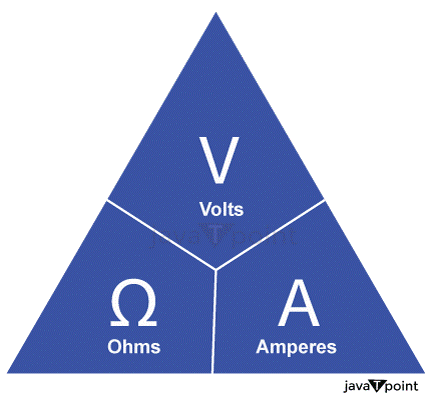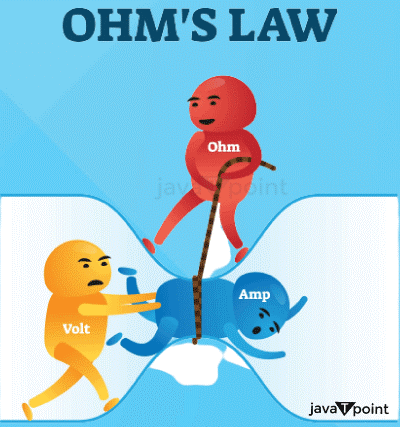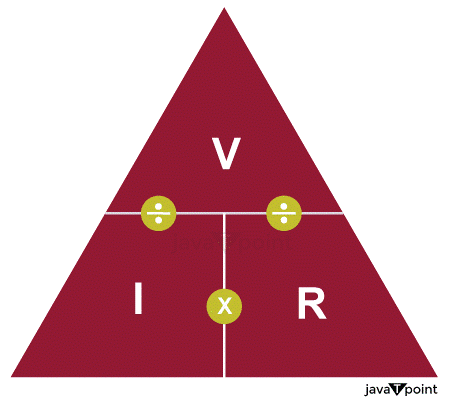Ohm's Law Definition Class 10Ohm's law, which defines how resistance, voltage, and current are related to each other. The voltage or potential difference across a number of distinct substances determines how much constant current flows through them. Ohm's Law Early HistoryOhm's law was first presented in 1827 in Georg Ohm's publication, The Galvanic Chain, Mathematically Worked Out". Despite its importance to the physics of electricity at the time, however, other researchers and critics didn't warmly welcome this law. Georg Ohm's discoveries were viewed as heretics by the German education minister of the period. Ohm endured years of abject hardship while giving individual lessons in Berlin before being appointed director of the Nuremberg Polytechnic School in 1833. The London-based Royal Society gave him the Copley Medal in 1841 in recognition of the importance of his discovery. They accepted him as an official member the next year. Ohm's long-time desire to become a professor of experimental Physics at the University of Munich was fulfilled in 1849, just five years before he passed away. 
Compared to Peter Barlow's earlier, incorrectly concluded law that the total amount of electrical current corresponded to the cross-sectional area of the conductor, Ohm's law gained widespread acceptance and demonstrated practical applications to the development of telegraph systems in addition to the science of electricity. Ohm's law is consistent with even contemporary electromagnetism and electrical circuitry theories. Surprisingly, the equation is effective at the atomic level; the relationship stated in Ohm's law still applies to the passage of electric current via silicon wires comprised of five atoms. The early quantitative explanations of the mechanics of electricity were all significant, but Ohm's law was perhaps the most significant. Today, we view it as essentially evident. This was not the case when Ohm initially released his paper; critics met his treatment of the subject with animosity. They referred to his writing as a "web of naked fancies," The minister of education declared that "a professor who preached such heresies was unworthy to teach science." The prevailing scientific ideology in Germany at the time claimed that since nature is so perfectly organized, experimentation is unnecessary to gain knowledge of it and that scientific conclusions can be inferred solely from reasoning. Martin Ohm, a mathematician, was also fighting the German educational system. These limitations hampered Ohm's work, and it took until the 1840s for his ideas to gain widespread recognition. But before he passed away, Ohm was honoured for his scientific achievements. Ohm's law was well-known and regarded as proven in the 1850s. Alternatives like "Barlow's law" were found to be ineffective regarding actual telegraph system design applications, as Samuel F. B. Morse described in 1855. J. J. Thomson discovered the electron in 1897, and it was soon realizedthat it is the particle (charge carrier) responsible for transporting electric currents in electrical circuits. The Drude model, the earliest (classical) theory of electrical conduction, was put forth by Paul Drude in 1900, and it provided a formal justification for Ohm's law. According to this theory, a solid conductor comprises an atom (ion) lattice that is immobile and contains randomly moving conduction electrons. The electric current is created when a voltage is applied across a conductor, which creates an electric field and accelerates electrons in its path. However, when electrons strike atoms, they scatter and move in an erratic manner, converting the kinetic energy to thermal energy. It can be demonstrated, using statistical distributions, that over a wide range of voltages, the average electron drift velocity and, thus, the current is proportionate to the electric field and, hence, the voltage. Although the introduction of the theory of quantum mechanics in the 1920s has slightly altered this image, it is still possible to demonstrate in contemporary theories that the average electron drift velocity corresponds to the electric field, leading to the derivation of Ohm's law. The free electron model was created in 1927 by Arnold Sommerfeld by applying the concept of the quantum Fermi-Dirac distribution of the electron energy to the Drude model. The Drude model of electron scattering off-lattice atoms was disproved a year later when Felix Bloch demonstrated that electrons flow in waves (Bloch electrons) across solid crystal lattices. As a result, electron scattering off-lattice atoms is not a significant mechanism; instead, electrons scatter off atoms that contain impurities and material flaws. The final successor, the contemporary quantum band theory of solids, demonstrated that electrons in a solid are constrained to energy bands with gaps between them of energies that particles of electrons are not allowed to have, contrary to what was assumed by the Drude model. An explanation for why some substances are conductive to electricity, while some semiconductors, as well as certain insulators, is that a specific substance's band gap size significantly impacts its electrical resistivity. While the mho, the previous name for electrical conductance, is still in use, the siemens, a new name honouring Ernst Werner von Siemens, was adopted in 1971. When writing formal documents, Siemens is recommended. Formula for Ohm's Law
Voltage, current, and resistance are all written as: V=IR Ohms (Ω) is the symbol of resistance in the SI system. To comprehend Ohm's law, three fundamental concepts?voltage, current, and resistance?must be understood. Voltage: Voltage is the measure of the energy delivered per Coulomb. The quantity of potential energy across the two terminals is another way to express it. The potential difference of one volt (V) between two terminals provides one joule of energy for every coulomb of charges that travel through it. Resistance: The characteristic of a substance that makes it more likely to obstruct the flow of electricity through it is referred to as resistance. Thus, a circuit with a higher resistance value will permit a smaller proportion of charges to pass through it, whereas one with a lower resistance value will permit greater quantities of electrons to pass, supporting the total amount of current passing through it. The amount of resistance in a wire with a consistent cross-sectional area will vary depending on the wire's length and cross-sectional area value. It has a direct relationship to l/A. R = ? The conductor's temperature is another factor that affects the resistance. Current: Current is the rate at which charges move across a specific cross-sectional area. The amount of current that flows when 1C of charge, or 6.24 x 1019 electrons, pass across a cross-sectional area in a unit of time is defined as 1 A. Ohm's Law's LimitationsOhm's law has several restrictions. Those are the following:
Applications of Ohm's LawOhm's law is helpful in calculating electrical circuit voltage, current, and resistance values. Therefore, we may determine the values of other parameters such as drift speed, resistivity, and many more with the use of these data. We can use it to estimate power consumption as well.
What may the Ohmic Law be Used to Demonstrate?Ohm's Law can be used to verify static circuit component values, current levels, voltage sources, and voltage dips. A high-voltage situation could be indicated if test equipment finds a reading of current that is higher than usual. This could happen if resistance has dropped or voltage has increased. This can point to an issue with the circuit or the power supply. 
In a direct current (dc) circuit, a lower-than-average current measurement could mean that the voltage has fallen or the circuit resistance has risen. Corroded or loose connections, damaged components, or all three could bring on higher resistance. Loads of a circuit using electrical current. Any form of component, including a small electronic device, such as a computer, a home appliance, or a large engine, can be a load. Most of these parts (loads) have a nameplate or explanatory tag attached. Along with a multitude of reference numbers, these nameplates also provide safety certifications. Technicians read the nameplates on components to understand standard current and voltage levels. Using Ohm's Law, one can determine which part of a circuit is malfunctioning and, consequently, where a problem might be if standard values during testing do not register on a digital multimeter or clamp meters. Ohm's law is an empirical statement that generalizes from several tests that have demonstrated that for the majority of materials, a current is roughly proportional to an electric field. Unlike Maxwell's equations, which are invariably followed, this set of equations is less basic. Any given material will degrade in the presence of an electric field strong enough to cause it to disintegrate. However, some materials useful in the field of electrical engineering are "non-ohmic" in weak electric fields. Many different length scales have been used to observe Ohm's law. Ohm's law was predicted to break at an atomic level at the beginning of the twentieth century, but studies have not confirmed this prediction. In 2012, scientists proved that silicon wires as thin as 4 atoms wide and an atom high can still obey Ohm's law.
Next TopicTransparent Definition
|
 For Videos Join Our Youtube Channel: Join Now
For Videos Join Our Youtube Channel: Join Now
Feedback
- Send your Feedback to [email protected]
Help Others, Please Share










